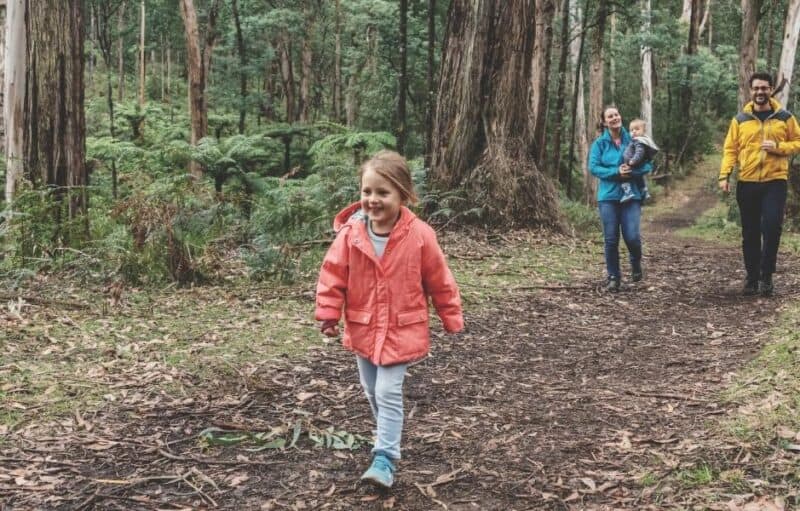PARK WATCH Article March 2022 |
The big trees of Wellsford Forest, on the land of the Dja Dja Wurrung, are well known to the locals who have advocated for their protection for many years. Jordan Crook and the campaign team went out to meet these survivors in the Box-Ironbark forests around Bendigo.
Box-Ironbark Forests were some of the heaviest hit during colonisation, with 83 per cent cleared in Victoria. What remains is still recovering from past logging and mining. So the sight of a big tree, full of hollows, towering above the surrounding forest is quite confronting – they provide living examples of what the forests looked like before colonisation.
Wellford Forest was not included in the parks legislated in 2002 in response to the Environment Conservation Council (ECC) Box-Ironbark Forests and Woodlands Investigation, and protection was well overdue. But its values were finally recognised during the more recent Victorian Environmental Assessment Council (VEAC) Central West Investigation, which recommended that Wellsford Forest be added to the Greater Bendigo National Park to protect its high conservation values from extractive industries such as logging and mining. Unfortunately, this recommendation was rejected by Environment Minister Lily D’Ambrosio last year.
The Victorian Government has instead committed to changing the tenure of Wellsford State Forest by adding it to the existing Bendigo Regional Park. The government stated in their response to the VEAC recommendations that the rejection of national park status for the Wellsford Forest was “to provide another area for domestic firewood collection (from designated sites) until June 2029, and provide greater flexibility for the North Central Victorian Goldfields Ground Release”. In regards to the latter, the government’s response reveals plans for future expanded mining activity: “The government supports mining occurring beneath the park addition and acknowledges that some minimally intrusive surface activity may need to occur in the regional park addition to support this” (emphasis added). The so called “minimally intrusive surface activity” could likely be venting from under or through the regional park from the existing mine adjacent it.
The lost opportunity of protecting the Wellsford Forest forever in a national park and excluding destructive extractive industries such as logging and mining is very disappointing, especially for the community that has been campaigning for its protection for several decades.
The government’s decision to include Wellsford Forest in the regional park will at least see an immediate end to commercial logging, but logging for domestic firewood will continue until June 2029. This is a serious threat to the health of both the big trees and the threatened species that call Wellsford Forests home, such as Brush-tailed Phascogale and Lace Monitor.
With the knowledge that the big trees will remain under threat until possibly 2029, late last year we joined with Bendigo and District Environment Council to formally survey and document the big trees of Wellsford Forest to better advocate for their protection.
A stone’s throw from Bendigo, we followed locals Stuart, Wendy and John into the forest as they guided us to the big trees. They have spent years walking the Wellsford Forest and finding big trees, and have come to know them and the wildlife that live within their hollows and the wildflowers that flourish below them.
As we wrapped our measuring tapes around the big trees, we wondered how these giants had escaped the saw, unlike the coppiced trees surrounding them. However they managed to stay standing, they are now key to the ecological health of the Wellsford Forest. But their continued survival and care rely on knowing where they are and sharing their location with current and future land managers.
Giant Lace Monitors sunned themselves above us in the canopies. These reptiles can grow as long as two metres and weigh as much as 20 kilograms – so they need large hollows that only big trees provide.
Most tree hollows take at least 100 and really over 120–150 years to form in hardwood Eucalypt trees in Australia. Hollows are rare in the Box-Ironbark Forests due to the amount of historical clearing that has occurred and the slow growth of the Box and Ironbark tree species (Eucalyptus tricarpa and macrocarpa) because of the harsh growing conditions of central Victoria.
We assessed ten trees in Wellsford Forest as ‘Big Trees’. They are of high scientific, social, historic and aesthetic value (although the health of a few is of concern) and, together with the forest areas around them should be preserved and safeguarded from harmful domestic firewood logging, fuel reduction works and new track creation. They represent why the Wellsford Forest should have become a national park.
Right now, it is unclear which areas will be prioritised and opened up for domestic firewood logging. We are working to ensure the Wellsford Big Trees and the area around them are protected from further disturbance.
We have now submitted our assessment as a Threatened Species Detection Report to the Victorian Government.
Thank you to Stuart Fraser, Wendy Radford and John Bardsley for showing us the big trees and their tireless advocacy for the Wellsford Forest.
Update:
On 2 March, two of the Wellsford Big Trees were listed on the National Trust’s National Register of Significant Trees.
More
Did you like reading this article? You can read the latest full edition of Park Watch magazine online.
Want to be kept up to date about this and other nature issues in Victoria? Subscribe to our email updates.
You can also receive our print magazine Park Watch four times a year by becoming a member. Find out more.
